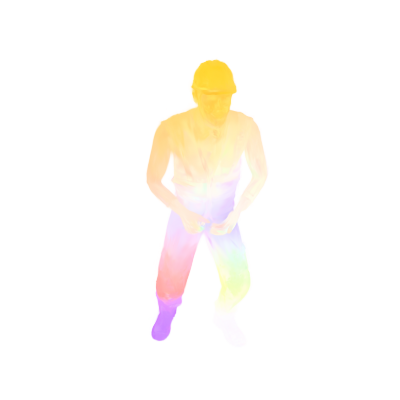- The paper demonstrates a novel extension of Gaussian splatting into a 4D temporal domain, enabling efficient dynamic scene synthesis.
- It leverages temporal slicing and CUDA optimization to render dynamic scenes at up to 277 FPS on RTX 3090 GPUs.
- Results show superior performance over state-of-the-art methods, balancing high-fidelity rendering with real-time processing speeds.
"4D-Rotor Gaussian Splatting: Towards Efficient Novel View Synthesis for Dynamic Scenes" (2402.03307)
Introduction
The quest for efficient novel view synthesis (NVS) of dynamic 3D scenes, particularly leveraging temporal versus static 3D representations, presents formidable challenges in the field of computer vision and graphics. Despite remarkable strides in static scene synthesis, the complexity of temporally varying scenes has limited the advancement of dynamic NVS techniques. This paper introduces "4D Gaussian Splatting" (4DGS), a methodology which extends the paradigm of 3D Gaussian splatting from static scenes to dynamic ones by incorporating a temporal dimension to create anisotropic 4D Gaussian splats. This approach not only models complex spatial-temporal movements but also achieves real-time rendering speeds with superior fidelity.
Methodology
The methodology centers around the extension of 3D Gaussian splatting to 4D by incorporating time as an additional dimension. This 4D model, represented as XYZT Gaussians, captures dynamic scene changes effectively. The Gaussians are tailored to represent dynamics at individual timestamps through temporal slicing, thus creating dynamic 3D Gaussians that can be projected into image form seamlessly. Temporal slicing enables efficient rendering as it adapts the static scene modeling advances to complex dynamic behavior, ensuring robustness in scenarios with abrupt movements or highly detailed renderings. Further leveraging a CUDA-based optimization allows 4DGS to realize performance metrics like achieving 277 FPS on RTX 3090 GPUs, delineating its feasibility for real-time applications.

Figure 1: A simplified 2D illustration of the temporal slicing process for 4D Gaussians, demonstrating their conversion to dynamic 2D ellipses.
Results
The results substantiate 4DGS's proficiency in both efficiency and quality. Evaluations conducted on datasets with diverse motions, including Plenoptic Video Dataset and D-NeRF Dataset, underscore 4DGS's superior speed and rendering quality compared to existing state-of-the-art methods. The technique outperforms contemporary volumetric rendering techniques, which are inherently hamstrung by the need for dense sampling and high computational overhead. Numerically, 4DGS accomplishes a remarkable parsing of 1352x1014 videos at 583 FPS, demonstrating over twofold speed gains over its contemporaries without compromising on accuracy or detail.

Figure 2: Visualization of 4D Gaussian temporal evolution within dynamic sequences, highlighting movement fidelity over short time spans.
Discussion
4DGS's introduction offers transformative possibilities in areas requiring high-fidelity and real-time 3D scene rendering. The efficiency gains open up new potential for applications in virtual reality and gaming environments, where dynamic scene rendering capability is paramount. Theoretical implications suggest 4DGS's robustness in modeling high-entropy scenes which challenge traditional NVS methodologies. However, certain limitations, such as handling highly translucent objects and motion blur, warrant further investigation. Prospective enhancements in hybridization with machine learning models could address these nuances, propelling NVS technologies forward.
Conclusion
Overall, 4D-Rotor Gaussian Splatting ushers in a new era for dynamic scene synthesis, merging high-quality renderings with unprecedented processing speeds. By extending the dimensionality of Gaussian splats into the temporal domain, 4DGS surmounts the key obstacles of dynamic vs. static scene modeling, aligning well with real-world application constraints while fostering continuous evolution within the domain of neural radiance field methodologies.






Figure 3: Speed fields visualization, evidencing the proficient motion capture akin to the optical flow representation derived naturally through 4D Gaussian slicing.









